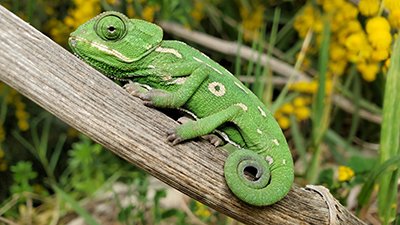Amazing Turtle Shell Development
The incredible way a turtle develops a shell—is it an evolutionary accident or part of God’s design?
News Source
- BBC News: “How the Turtle’s Shell Developed”
Turtle evolution seems to be a big topic in the news recently. We covered the topic last December, last November, and last October; then we covered it again this past March. So, what’s the latest?
A team of scientists from Japan studied turtle embryos as they developed to learn how and why their ribs grow into a hard upper shell, setting little turtles apart from, say, chicks or mice. In fact, those are the two other creatures the turtles were compared to.
Calling it an “evolutionary novelty,” the researchers learned that part of the turtle embryo’s body wall folds in on itself, causing the ribs to grow outward. The fold produces a thickening of the turtle’s skin called the carapacial disk. In the words of study coauthor Shigeru Kuratani, the folding “re-maps” the turtle’s body, preventing the ribs from growing inward. Before that point, the muscles and skeleton of a turtle embryo are in similar positions to those of a mouse or chicken embryo.
Is this “novelty” a perfect example of evolution or a perfect example of design? For starters, we should throw out the early similarities between turtles, mice, and chicks as support for evolutionary ideas. If all turtles, mice, and chickens (as with other vertebrates) begin their life as a (single-celled) zygote and grow into very different organisms, there must be a spectrum of similarity that steadily decreases during growth. The zygotes are very similar, with the stored genetic information the primary difference. By birth, the genetic differences will have given rise to a wide range of morphological differences. In other words, similarity in embryos is only a reminder of the similarity between all vertebrates, and need not be due to evolution. Additionally, Kuratani emphasized that relative to the other embryos, turtle embryos have “entirely unique [types of] connectivity” in some of their structures, such as their pectoral muscles.
Evolutionists see the incomplete shell as a halfway point in (constructive) information-adding evolution.
If embryonic similarity does not show evolution, what about the turtle fossils we reported on last December? (Those fossils were missing a shell on top, having one only on their underside.) According to Kuratani, “The developmental stage of the modern turtle, when the ribs have not encapsulated the shoulder blade yet, resembles the (body) of this fossil species.” Yet creationists could, for example, explain the fossil just as easily as turtles whose genes had mistakes and therefore failed to initiate the upper-shell-forming fold. Or perhaps the fossils were from a separate reptile kind that were not designed with upper shells. It’s a game of interpretation: evolutionists see the incomplete shell as a halfway point in (constructive) information-adding evolution; creationists see the bottom-only shell as either intentional or as a result of (destructive) information-reducing devolution.
As for the embryonic development process itself, the scientists aren’t sure why it happens, nor do they propose how many millions of years of harmful mutations it took before the shell formed so perfectly as to be of use. Rather, Kuratani simply concluded, “Developmental changes in evolution give rise to an enormous diversity of animal forms. No matter how exquisite it may seem, as if it were some sort of magic, evolution is at most a good trick.” And ScienceNOW quotes University of Toronto–Mississauga vertebrate paleontologist Robert Reisz (whom we quoted in our March coverage), who says of the quirky turtle development, “It’s a wonderful design,” though he accepts the evolutionary explanation. (The article also states, “Turtles appear to spring up fully formed in the fossil record, which has led to a lot of debate about who their closest relatives are.”)
From the topic of embryonic similarity to the topic of how the turtle got its shell, the creation model is at least as successful as the evolution model. Both models have explanations for turtle fossils and embryonic similarity. But only the creation model can use observational science to account for the origin of turtle “design,” while the evolution model’s assertions—that this design is the product of unobserved, random mutations—are based on blind faith.
Further Reading
- Are Mutations Part of the “Engine” of Evolution?
- 1.5 Embryonic Development
- Get Answers: Design in Nature, What Makes Us Human?, Fossils, Genetics, Information Theory, Mutations
For More Information: Get Answers
Remember, if you see a news story that might merit some attention, let us know about it! (Note: if the story originates from the Associated Press, FOX News, MSNBC, the New York Times, or another major national media outlet, we will most likely have already heard about it.) And thanks to all of our readers who have submitted great news tips to us. If you didn’t catch all the latest News to Know, why not take a look to see what you’ve missed?
(Please note that links will take you directly to the source. Answers in Genesis is not responsible for content on the websites to which we refer. For more information, please see our Privacy Policy.)

Answers in Genesis is an apologetics ministry, dedicated to helping Christians defend their faith and proclaim the good news of Jesus Christ.
- Customer Service 800.778.3390
- © 2024 Answers in Genesis




